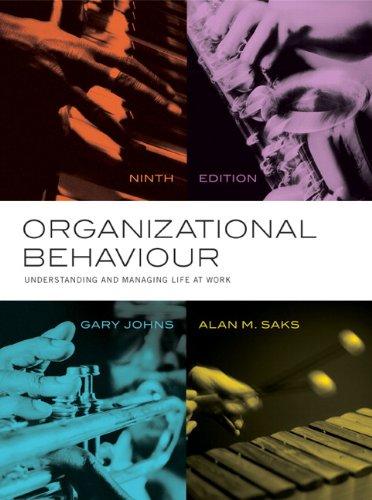The purpose of this exercise is to learn about an organization that has implemented advanced information technology
Question:
The purpose of this exercise is to learn about an organization that has implemented advanced information technology and the effect it has had on organizational structure and job design.
This exercise is suitable for an individual, a group project completed outside the class, or a class discussion guided by the instructor. In the case of the group project, each group might choose and contact a local organization for information. Your instructor might suggest one or more organizations for this exercise. Alternatively, you can also focus on your own organization if you are currently employed or an organization you have previously worked for. The main requirement is that you choose an organization that has recently implemented some form of advanced information technology.
1. Discuss in detail the advanced information technology implemented by the organization.
a. Describe the advanced information technology that has been implemented in the organization. What is it called and what is it used for?
b. Is this an example of advanced manufacturing technology or advanced office technology?
c. What were the main reasons for implementing the technology in the organization? What are the expected advantages and benefits?
d. Who is expected to use the technology (which job(s)) and what will they be doing with it?
2. Refer to the section in the text on “The Two Faces of Advanced Technology,” and then describe the technology implemented by the organization along those lines. In other words, what are the potential “two faces” of the technology that the organization has implemented?
3. What effect has the technology had on the organizational structure? What are some other potential implications of the technology for the organization’s structure?
a. structural characteristics (i.e., span of control, flat versus tall, formalization, centralization, and complexity);
b. basic methods of coordinating divided labour (i.e., direct supervision, standardization of work processes, standardization of outputs, standardization of skills, and mutual adjustment);
c. other methods of coordination (i.e., liaison roles, task forces and teams, and integrators); and
d. organic versus mechanistic structures.
4. What effect has the technology had on job design? What are some other potential implications of the technology for job design? Refer to the following from Chapter 6 when answering this question:
a. traditional views of job design;
b. job characteristics model;
c. job enrichment; and
d. work design characteristics.
5. What other effects has the technology had on employees and the organization? For example, what has been the effect on the quality of working life? What have been the main outcomes of the technology for the organization and employees? Have there been any problems or disadvantages? Did most employees use the technology, or have there been problems in getting employees to use it?
6. What advice can you give the organization about its implementation and use of technology?
Step by Step Answer:

Organizational Behaviour Understanding And Managing Life At Work
ISBN: 9780133347500
9th Edition
Authors: Gary Johns, Alan M. Saks





